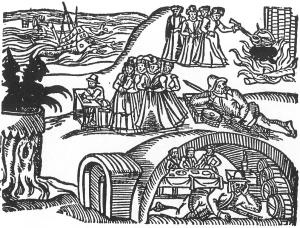This is a past event
Elphinstone Institute Public Lecture Series
Every culture defines its witches in particular ways. What a witch was, and of what they were thought capable, exhibited degrees of variation across Early Modern European societies. The basic threats practitioners of witchcraft presented appear to be universally, and indeed globally, much the same – such as hurt, damage, infertility, destruction, and interpersonal conflict – though the specific characteristics can differ across cultures and geographical regions. Many of those differences are closely related to the means of subsistence. In a Scottish context, details of accusations of witchcraft have tended to focus on inland Lowland farming communities and the alleged interference with dairy production, and injury or death of livestock. However, fishing villages seem also to have contributed more than their fair share of witches. The coastal communities of Ayrshire, Aberdeenshire, Buchan, East Lothian, and Fife were all major suppliers, while a significant number of accused within the Highland region also came from coastal parishes. In the Northern Isles of Orkney and Shetland, maritime issues, such as the sinking of ships, drownings, or depletion of fish stocks, were occasionally attributed to the activities of witches. With some cross-cultural comparisons with other North Atlantic and Arctic regions, this paper will seek to establish if there was anything particular or special about Scottish witches and witch belief in coastal communities.
- Speaker
- Lizanne Henderson
- Hosted by
- Elphinstone Institute
- Venue
- MacRobert Building
- Contact
-
No booking required.
Admission £3.00. Students free.

